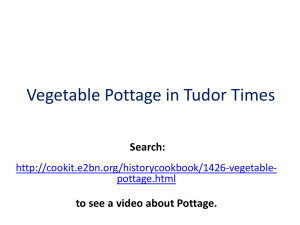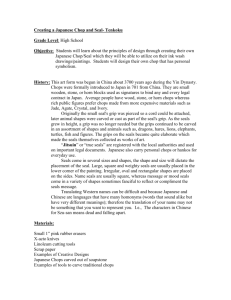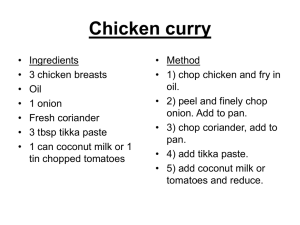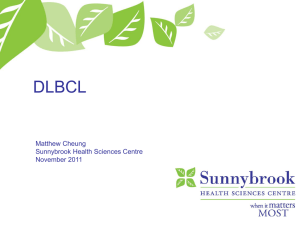Fun with Stories - New Orleans Public Library
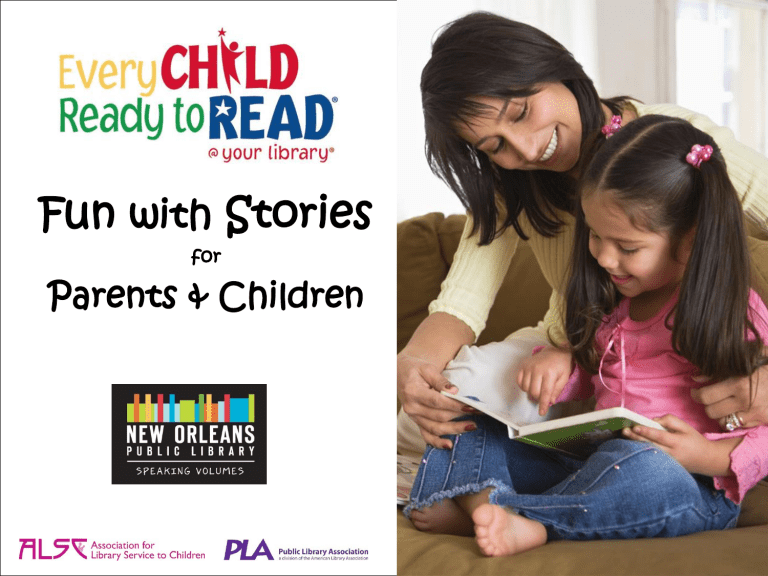
Fun
with
Stories
for
Parents & Children
Goals for Today ’ s
Workshop
•Overview of the program ’ s values &
ECRR ’ s six pre-reading skills
•Review of best practices for building those skills
•Activity ideas and book recommends
•Tips for engaging children in early literacy activities
•New Orleans Public Library and community resources supporting early literacy
A Sailor Went to Sea
A sailor went to sea, sea, sea.
To see what he could sea, sea, sea.
But all that he could see, see, see was the bottom of the deep blue sea, sea, sea.
A sailor went to chop, chop, chop.
To see what he could chop, chop, chop.
But all that he could chop, chop, chop was the bottom of the deep blue chop, chop, chop.
A sailor went to doo-op-do-op.
To see what he could doo-op-do-op.
But all that he could doo-op-do-op was the bottom of the deep blue doo-op-do-op.
A sailor went to sea, chop, doo-op-do-op.
To see what he could sea, chop, doo-op-do-op.
But all that he could sea, chop, doo-op-do-op was the bottom of the deep blue sea, chop, doo-op-do-op.
Why are parents so important in helping their children get ready to read?
Core Values of Program
You are your child ’ s first teacher.
You know your child best.
Children learn best by doing, and they love doing things with you.
Being ready to read begins before children start school.
Reading is essential to school success.
Children become “ ready to read ” between
4 and 7 years old, but becoming “ ready to read ” starts at birth.
You are already doing activities to help your child be ready to read.
Six Skills for
Early Literacy
Print Motivation - I Love Books
Print Awareness - I See Words
Phonological Awareness - I Hear Words and Sounds
Narrative Skills - I Tell Stories
Vocabulary - I Know Words
Letter Knowledge - I Know My ABC ’ s
Every Day you can help your child become
READY TO READ
Five simple practices help children get ready to read.
Your child will learn words from you talking to him or her. They will understand many words before they say “ mama ” or “ papa.
” helps your child learn words, stories and the rhythm of speech.
Parent Tip: Use “ parentese ” with your child higher pitch short simple sentences long vowel sounds
Speak to your children in the “ language of the home ”
Make Stories More Fun!
Use simple props, puppets or stuffed animals, to tell a story.
Use silly voices for different characters.
Ask your child to join in!
Parent Tip: When talking with your child ask questions and
WAIT
Research finding:
For young children who are just learning to tell more complex stories, give time for them to make connections, anywhere from
5 to 12 seconds.
A Picture Walk can come before reading a word of the book.
Let ’ s practice TALKING with a picture walk.
We ’ re going to meet the three little kittens who lost their mittens.
Take-Away Activity: Make a Picture Walk and One Minute Story
Talent and a great voice is not required! Your child will love your voice.
Singing is a natural way to learn about language.
Rhythms and rhymes help develop listening and attention skills.
Sing Songs that
Tell a Story
Sing songs fast and slow .
Over and over and over and over
Singing helps your child get ready to read.
Let’s Practice SINGING during our daily routines!
This is the way we wash our mittens,
Wash our mittens, wash our mittens,
This is the way we wash our mittens,
Early in the morning.
This is the way we eat our pie,
Eat our pie, eat our pie,
This is the way we eat our pie,
Early in the evening.
This is the way we say yum-yum,
Say yum-yum, say yum-yum,
This is the way we say yum-yum,
Every day at dinner.
Don ’ t Remember the Lyrics?! www.kididdles.com
Story Songs
Five Little Monkeys
There Was an Old Lady Who Swallowed a Fly
All Around the Mulberry Bush
Hokey Pokey
Miss Mary Mack
Where is Thumbkin?
Row Row Row Your Boat
When Your Happy and You Know It
What are YOUR Favorites???
Reading anything: signs, labels, newspapers, mail, plus books!
Reading together with your children makes a difference that lasts a lifetime.
Read to your child
EVERYDAY
Follow your child ’ s
INTEREST
Oral language and vocabulary development is the foundation for all other skills critical to successful reading.
(Dickenson et al., 2003)
Nursery Rhymes and
Fairy Tales are easy to tell. Make up your own.
Let ’ s practice READING aloud the
Three Little Kittens .
Let ’s Practice WRITING by Making Mittens!
Making Marks Drawing and Writing
Writing actually helps your child learn to read.
Name Writing Word Writing
Children make progress in drawing and writing by
Practicing.
Reading and writing go together.
Babies - Feel a pair of mittens, talk about color & shape.
Toddlers - Color and decorate the mittens.
Pre-Schooler - Trace mittens & write name on the mittens.
A large listening and spoken vocabulary makes it easier for a child to connect a written word to its meaning.
Research finding: To be ready to learn to read, most children need to have about 15,000 words in their listening vocabulary.
Playing helps your child get ready to read.
Children learn about language through different kinds of play.
Play helps build narrative skills and vocabulary.
Play helps children think symbolically.
Encourage dramatic play using stuffed animals puppets sticks leaves boxes
What does your child like to play with?
Stories and books feed imaginations!
Let ’ s practice PLAYING by retelling the story of the
Three Little Kittens .
Your home can be a learning center to help your child get ready to read.
Make your home a learning zone!
It doesn ’ t have to be expensive!
Basic toys, cloth or board books, crayons, dolls, stuffed animals, chalk, sturdy toy trucks and cars, a few books, and some paper.
Books
Music
Story Times
Activities
Fun Programs
Library Cards are
FREE!
You can practice all of these at
YOUR LIBRARY!
www.neworleanspubliclibrary.org
Come to future
Every Child Ready to Read workshop for parents and caregivers
•
Fun with Letters
• Fun with Words
• Fun with Science and Math
We also offer PrimeTime Family Reading Time, a program for families with children ages 6 to 12. It is a 6-week program of free workshops with meals, transportation, and rewards.



